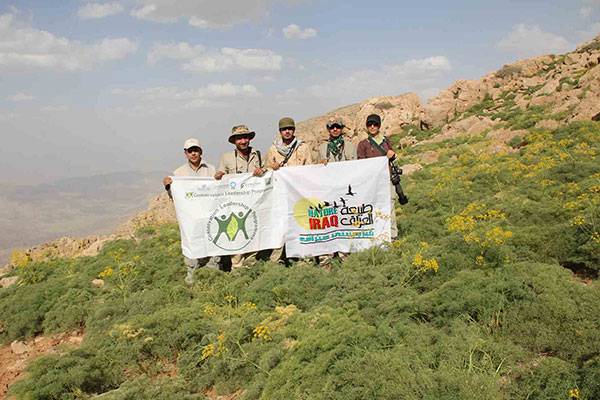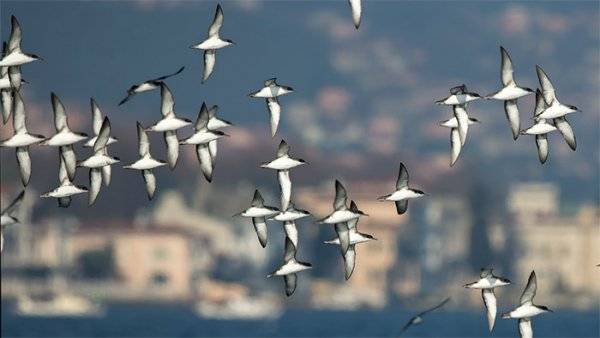Guest blog by: A report by Louis-Philippe Campeau
Following the recent monumental publication in Sandgrouse of articles related to Little Bustards Tetrax tetrax in their “eastern population”, it would be easy to think that all has been said. Not so: We are excited to present the results of another summer of fieldwork here in Kyrgyzstan which saw the very first Little Bustards outside of Europe being equipped with tracking devices!
Since 2021 and thanks to OSME’s ongoing support, we at Ornithologia (then the Ornithological Society KG) have first confirmed that Little Bustard had resumed breeding in the country and then mapped this recovery across the Chuy valley, a large agricultural steppe area in the north of the country. For the results of this investigation, see “Mapping the recovery of the Little Bustard Tetrax tetrax in Kyrgyzstan” in Sandgrouse. Determined to build on this experience and after fruitful discussions with João Paulo Silva from BIOPOLIS-CIBIO, we decided to join forces and finally attempt to capture and tag Little Bustard with tracking devices. With so little known about the post-breeding and migratory behaviour of these birds across the region (we currently can only hypothesise as to where birds breeding in Kyrgyzstan may overwinter), this was the obvious next step. Thanks to another Conservation Fund grant from OSME, we have been able to make this a reality. In early June 2025, João Paulo Silva and Carlos Pacheco from Biopolis and Adinai Akhmatova and Louis-Philippe Campeau from Ornithologia, with the support of all the organisation’s members, spent two weeks trying to capture the birds.
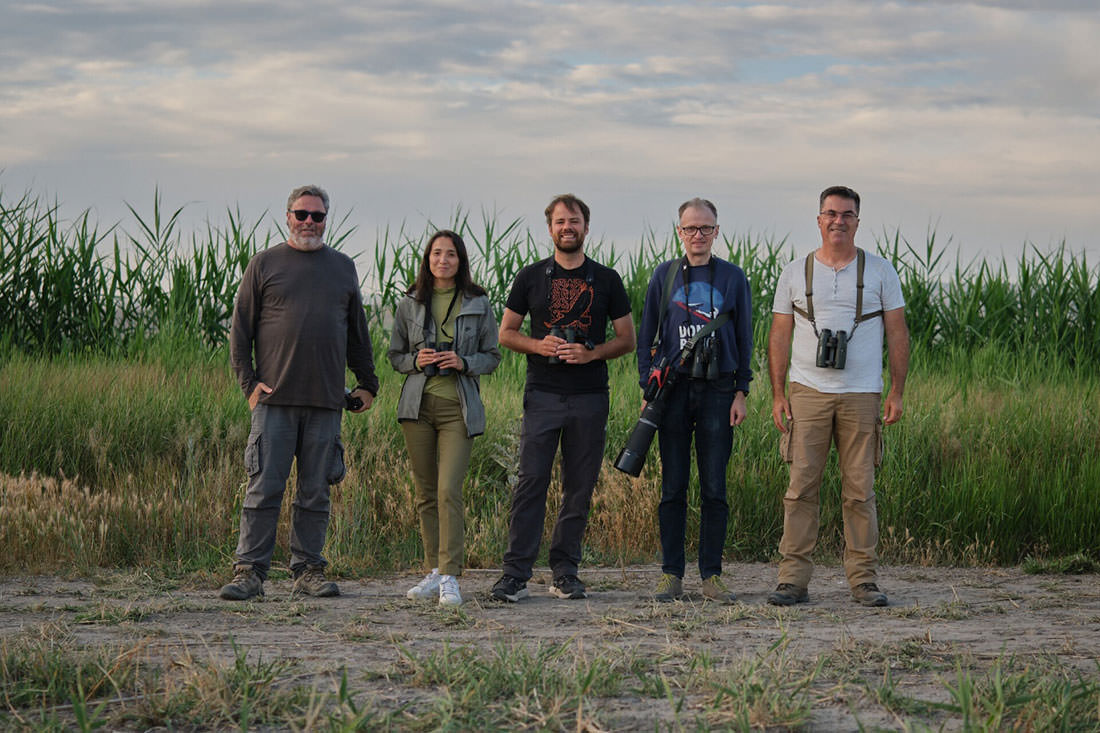
Things initially looked promising. “What you have here is high density!” said João Paulo during the first evening, as Little Bustard displayed all around us in alfalfa fields, doing their little “jumps,” flashing their white wings and emitting their trademark “Prttt!” Our target of 4 to 6 successful captures felt reachable and, maybe, even easy? The next day, we thus confidently deployed our trap on a previously identified display site, left our decoy male and waited. Within half an hour, the displaying male returned, immediately drawn to the decoy and… did nothing. Swapping the male decoy for the female one proved even less fruitful. This would happen day after day over the following week: displaying males would ignore the female decoy entirely and only approach the male decoy, either staying at a safe distance or even crouching nearby in submission (always behind the trap!). Our decoys, which had been used successfully in the Iberian Peninsula, were simply not working.
After ten days of hour-long waiting and near misses, with two different zones visited, the moral was low. There were wild birds plenty, but we just couldn’t catch them. We decided to move to Ornithologia’s initial research area and to employ a different technique: we stopped using the decoys altogether and instead trapped display sites a whole day before attempting capture, hoping that the birds would return to their display area naturally. And one finally did! On June 6th, we captured our first male, which we named Aitbek after the Islamic holiday Kurban Ait over which he was tagged. It took time, but we had it!
The process of fitting the device is very stressful to any bird and Little Bustards can be particularly vulnerable, so we wasted no time weighing or measuring our bird, instead focussing on placing the tag as quickly as possible before releasing Aitbek into the wild. We were relieved to see him displaying again at his usual spot the next morning.
With only a few days left, we tried to replicate our success elsewhere and indeed got very close twice, but no luck. It wasn’t until the very last morning that we succeeded again: our second male went straight back to his display site, allowing for the fastest capture of the whole trip. We named him “Belek”, meaning the gift in Kyrgyz.
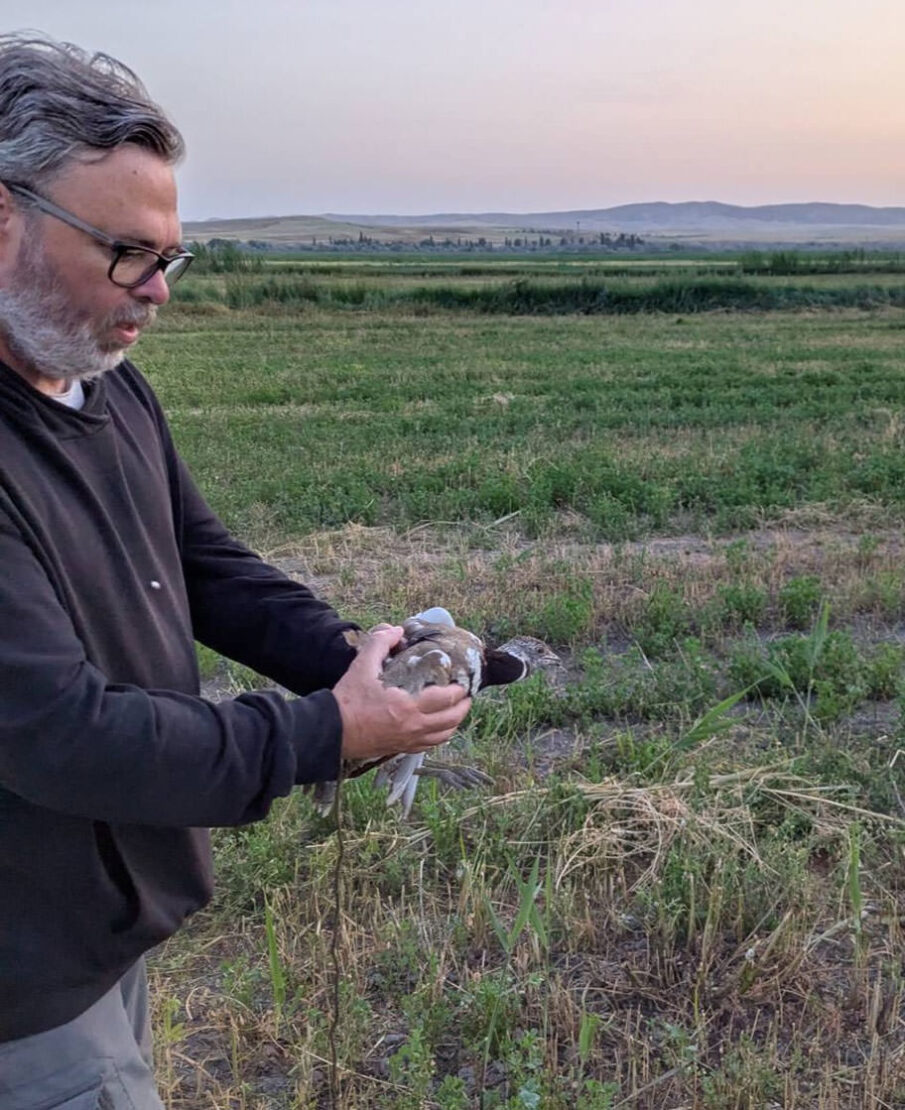
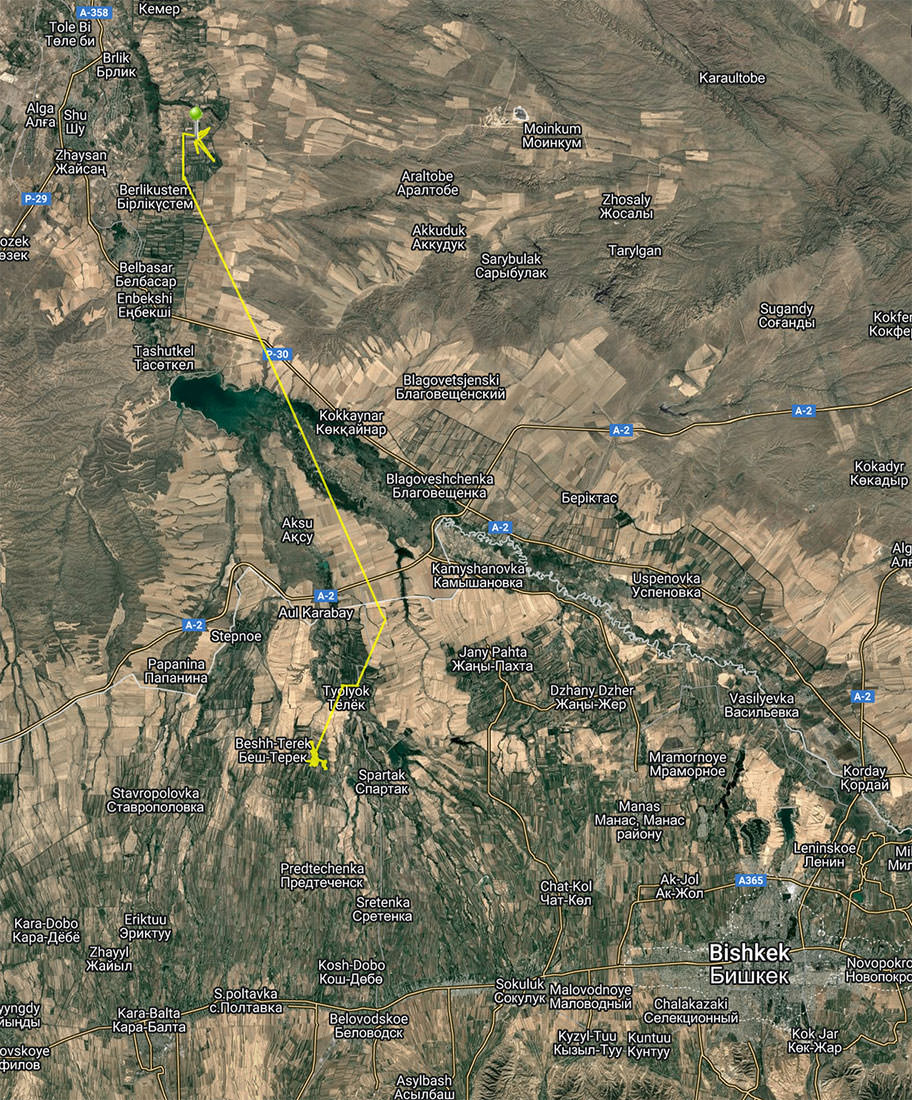
Hopefully, the next three months should see both of them moving west, then south, potentially revealing currently unknown wintering sites. Little Bustards are currently gathering in their post-breeding, pre-migratory flocks, which we try to monitor despite the challenges involved. While we wait, we are also planning our next move, as we hope to continue this work and the partnership between CIBIO and Ornithologia over the next years. Indeed, we hope to expand our work to a wider range of steppe species in 2026, using the agricultural steppe of the Chuy valley and beyond.
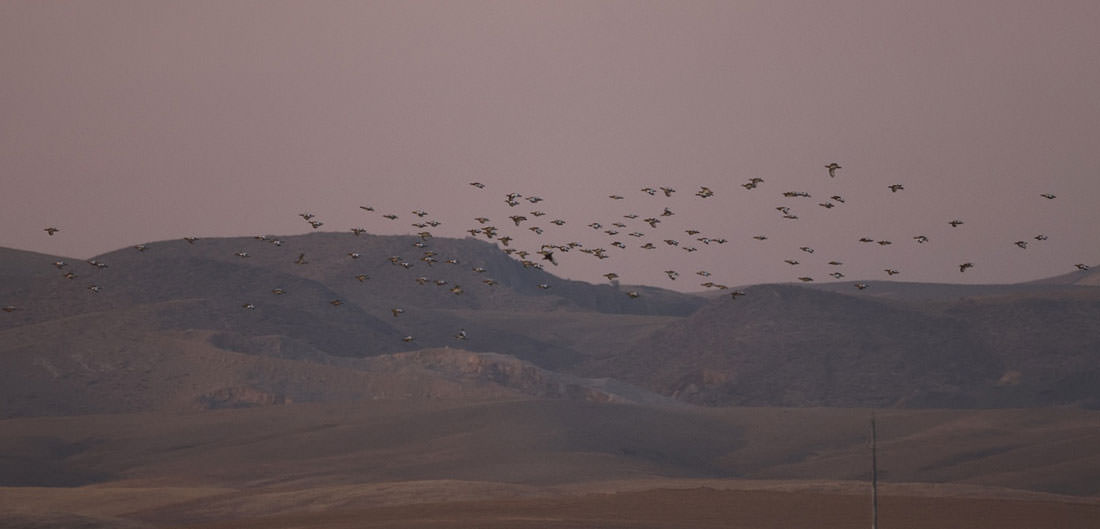
Finally, while trying to capture and tag birds was our priority for the summer, we also wanted to expand our knowledge of Little Bustard repartition within Kyrgyzstan. Our last season of work in 2023 had given us a good understanding of the Chuy valley, but the Talas valley, a neighbouring province of Kyrgyzstan bordering Kazakhstan and known to have hosted a breeding population in the past, remained totally un-investigated. We thus organised a 4-days expedition to the area, with listening points planned within the agricultural landscape. We struck gold on the very first morning in the upper reaches of the valley, with 5 males displaying in a typical habitat of cereal and alfalfa. This was not to last, however, as no further bird was encountered until the third day. The Talas valley is famous for its apple orchards and kidney bean fields. The former proved unsuitable for Little Bustards, as we expected. We quickly realised that beans were not much better, as by early June, they had only just started growing: the whole central part of the Talas valley was one vast barren field.
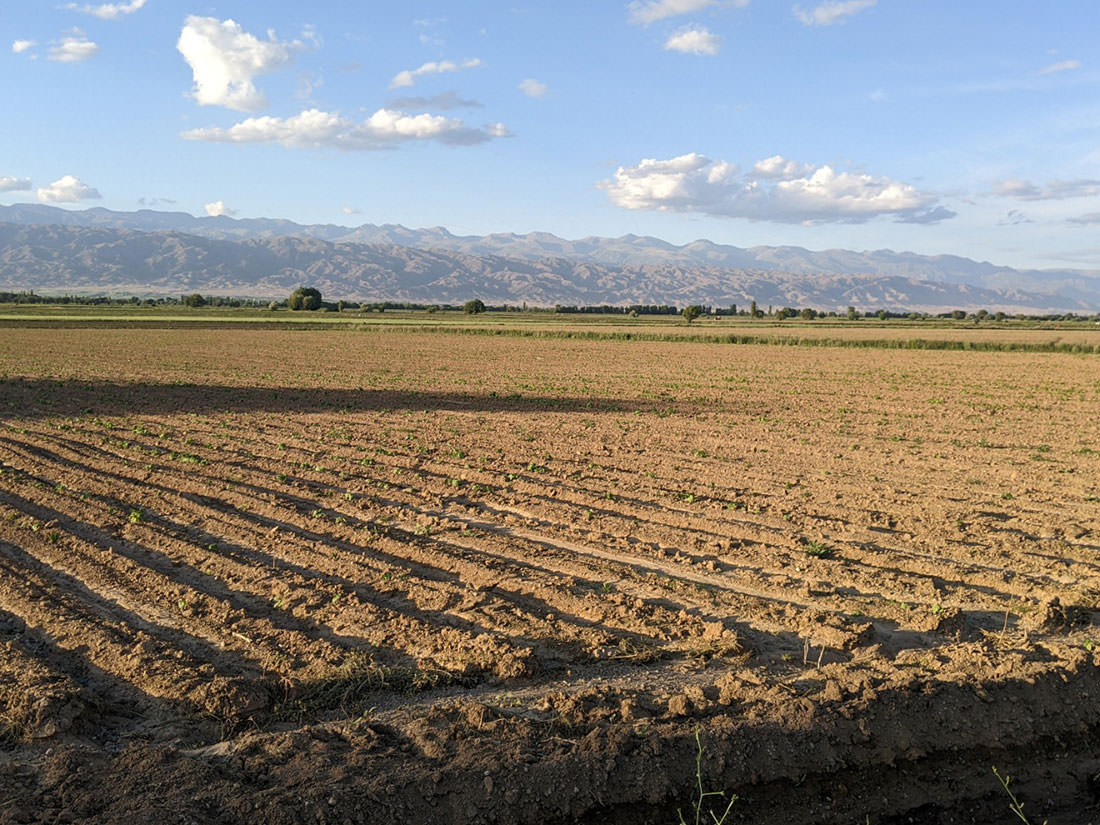
Meanwhile, in areas where alfalfa was most prevalent, the harvesting season was in full swing, causing maximum disturbance to the birds and our team, who could not hear anything other than the roar of diesel engines.
In the end, another 15 males were found in areas near the Kazakh border… in bean fields. We could not determine if that was due to a slightly different culture mix in the areas, to the proximity of the international border (which tends to limit poaching, as borders guards are warry of gun shots) or to something else. What is certain is that a breeding population subsists in the Talas valley, where it occupies suitable non-beans areas near the foothills and, in higher numbers, the border zone near Kazakhstan.
Now that several clusters have been discovered, further investigation is required to improve our understanding of the dynamics of this population and the potential threats to its stability, including the expansion of bean cultivation and other human-caused impacts.

